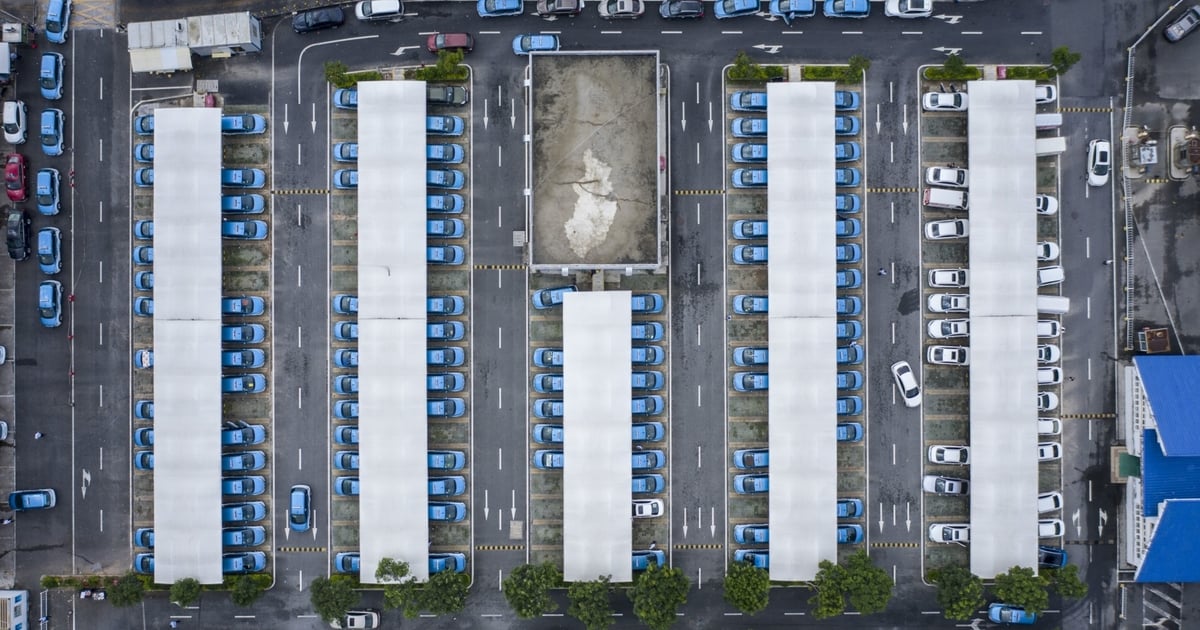
BEIJING — The growth in sales of China’s passenger vehicles was flat in March from a year earlier, industry data showed on Monday, as more price cuts by auto brands and the rollout of incentives by local governments helped to support demand.
March sales tallied 1.61 million, the China Passenger Car Association said. In the first three months, sales fell 13 percent to 4.33 million, it added.
Sales of new energy vehicles, which include pure battery electric cars and light trucks and plug-in hybrids, rose 22 percent in March and accounted for 34 percent of the month’s delivieres, data showed.
BYD led the segment with market share of 35.5 percent, while Tesla accounted for 14 percent.
There is no doubt that April will see a strong recovery in sales growth, Cui Dongshu, the association’s secretary general, told reporters, citing a low base in the corresponding period last year.
China imposed strict COVID-19 lockdowns in major cities, such as its commercial hub of Shanghai, in April 2022.
Prices of NEVs have been falling fast, reflecting discounts and tumbling battery costs, stepping up pressure on vehicles powered by internal combustion engines and the legacy brands behind them.
More than 40 brands have joined a price war started by Tesla this year, among them Nissan, Toyota and Volkswagen, which have started offering aggressive discounts on their best-selling ICE models to defend market share.
Local authorities, who see the auto industry as a pillar of the economy, have also been rolling out subsidies to drive consumer demand and some of the programs are starting to be matchd by automakers, to spur manufacturing.
The world’s largest auto market is in the midst of a heated price war, and the situation is only intensifying, making the market ideal for many consumers.
In the first quarter, a total of 649 variants of passenger cars, or around 20 percent of all vehicles on the market, saw transaction price drops of more than 10,000 yuan ($1,500), data compiled by research provider China Auto Market show.
Back in February, that percentage was just 12 percent of all cars, and it was as low as 6 percent this time last year.
Domestic and international automakers are aggressively cutting prices.
Wuling Motors is offering up to 10,000 yuan ($1,454) in subsidies including cash discounts on new energy models until May 31, the company said in a statement on Monday.
The Wuling Hongguang Mini EV, which Wuling Motors makes through a partnership with SAIC Motor Corp and General Motors, is one of the best selling EV models in China.
Some automakers have initiated price reductions quickly on their own as they saw what was happening around them, while others have piggybacked off incentives offered by local governments as part of broader economic-stimulus packages.
In March, for example, government subsidies in Hubei province in central China, together with discounts from state-backed Dongfeng Motor Group Co., slashed the price of the Citroen C6 by more than 40 percent.
Tesla Inc. arguably kicked all this off when it cut prices of its locally built models by as much as 14 percent in early 2023.
But despite an initial lead regarding the degree of price cuts, the U.S. automaker has now fallen behind in terms of who’s offering the steepest discounts — an indication of the extreme pressure affecting the entire industry, from carmakers through to dealerships.
Toyota Motor Corp.’s bZ4X, an electric crossover, has recorded the most significant sustained price drop this year in China, the data show. The model’s 400 kilometer-range Elite JOY version had a transaction price of 139,380 yuan in March, 30 percent down from 199,800 yuan in December.
German premium makers Audi and BMW are also offering generous discounts, particularly on electric models. It’s become a full-blown price war spanning gasoline to electric vehicles and ensnaring new-energy upstarts as much as it is legacy automakers.
While it’s not unusual for carmakers and dealers to give out incentives to clear inventory of older models, it’s the quarter’s exceptional intensity that’s sparked social media discussion and raised concerns among analysts about shrinking profit margins, not to mention potential compromises to quality and innovation. The long-term sustainability of some automakers is even coming into question.
Tesla’s shares plunged 6.1 percent earlier this month on concern that significant price cuts early this year have only yielded an incremental gain in vehicle sales.
China’s Association of Automobile Manufacturers, meanwhile, has called for an end to the price war, saying it isn’t a long-term solution to a slowdown in sales and accumulation of stock. The industry body has urged a “return to normal operation” to ensure the auto market’s healthy development.
It remains unclear whether some of the carmakers that have desperately placed their hopes on price cuts and cash incentives to spur sales actually have an exit plan. Is this just a race to the bottom and let the bankrupt carcasses pile up? There’s also the concern that spoiled customers may resist a return to normal pricing, which may result in a distorted market.
Some consolidation in China’s overheated car market is inevitable, and probably a good thing. But price cuts continuing at the pace they are arguably isn’t good for anyone, no matter how happy it may make shoppers today.